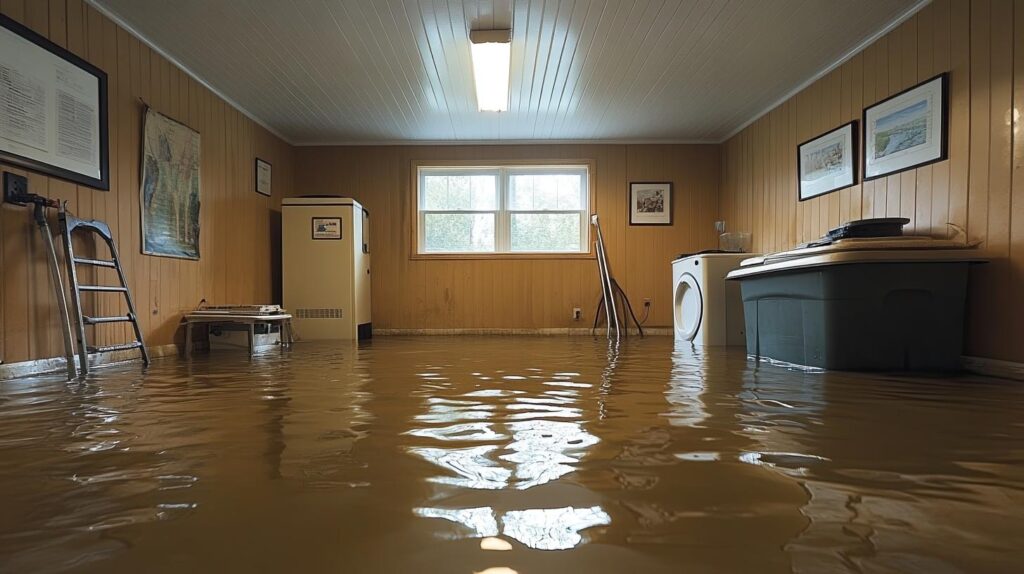
Contents
Water Removal is the first critical step when dealing with water in your basement. If you’ve ever faced this challenge, you know how important it is to act quickly. Understanding the best solutions can save you time, money, and stress. From sump pump installations to effective flood barriers, each method has its unique benefits. Let’s break down these options so you can choose the right one for your situation and keep your basement dry and safe.
Key Takeaways
Sump Pump Installation: Essential for preventing water damage; choose between submersible and pedestal types based on your basement layout and needs.
Wet/Dry Vacuum Usage: Ideal for quickly managing excess water; ensure strong suction and proper maintenance for effective water extraction.
Dehumidifier Deployment: Controls moisture levels in the basement, preventing mold growth; select based on room size and maintain regularly for optimal performance.
Water Extraction Services: Professional services use high-capacity pumps and specialized equipment for rapid assessment and removal of standing water.
Flood Barriers and Drainage Systems: Implement sandbags, inflatable barriers, or permanent systems to protect against flooding; maintain regularly to ensure effectiveness.
Sump Pump Installation
Installing a sump pump can be a game-changer for keeping your basement dry and preventing water damage. When you choose a sump pump, consider the different sump pump types available, like submersible and pedestal pumps. Each has its advantages, so think about your specific needs and basement layout.
Once you’ve installed your sump pump, don’t forget about sump pump maintenance. Regularly check the pump for debris, test it by pouring water into the pit, and verify the discharge line is clear.
This simple upkeep can extend the life of your pump and keep it functioning effectively, protecting your home from flooding.
Wet/Dry Vacuum Usage
After setting up your sump pump, you might still encounter some water issues, especially during heavy rains or floods.
That’s where a wet/dry vacuum comes in handy! It’s an efficient tool for tackling excess water and can be your best friend in keeping your basement dry.
Here’s how to make the most of your wet/dry vacuum:
Check suction power: Verify your vacuum is powerful enough to handle the job.
Perform regular vacuum maintenance: Clean the filters and empty the tank to keep it performing at its best.
Use appropriate attachments: Grab the right nozzles for tight corners and larger areas.
Work in sections: Vacuum one area at a time to ensure thorough water removal.
With these tips, you’ll effectively manage water accumulation, keeping your basement a safe and dry space for you and your family.
Dehumidifier Deployment
When humidity levels rise in your basement, deploying a dehumidifier can make a significant difference in maintaining a dry environment. This handy device pulls excess moisture from the air, helping to prevent mold growth and protect your belongings.
To get the best results, choose a dehumidifier suited for your basement’s size. Regular dehumidifier maintenance is essential; clean the filter and empty the water reservoir frequently to ensure peak performance.
You’ll want to monitor humidity levels and adjust the settings as needed for effective moisture control. Consider placing the dehumidifier in a central location for maximum airflow, and keep doors and windows closed while it’s running.
Water Extraction Services
Even with a dehumidifier in place, there are times when excess water can overwhelm your basement, especially after heavy rains or flooding.
In such situations, professional water extraction services can be a lifesaver. They use advanced extraction techniques to minimize water damage and restore your space efficiently.
Here’s what you can expect from these services:
Rapid Assessment: Experts will evaluate the extent of water damage quickly.
Powerful Pumps: High-capacity pumps remove standing water effectively.
Specialized Equipment: They use industrial-grade dehumidifiers and air movers to eliminate moisture.
Preventative Measures: After extraction, they may suggest ways to avoid future issues.
Flood Barriers and Drainage Systems
To protect your basement from flooding, investing in flood barriers and effective drainage systems is essential. These solutions safeguard your space and contribute to overall flood prevention. You’ll want to contemplate the right combination for your home.
| Flood Barrier Type | Benefits |
|---|---|
| Sandbags | Cost-effective, flexible |
| Inflatable Barriers | Quick deployment, reusable |
| Permanent Barriers | Long-term protection, durable |
| Dikes | Customizable, effective for large areas |
| Water-Activated Barriers | Automatic, minimal effort |
Regular drainage maintenance is key to ensuring these systems work effectively. Clear debris from drains, check for clogs, and inspect barriers regularly. By taking these proactive steps, you’ll enhance your home’s resilience against water damage, creating a safer environment for you and your family.
Conclusion
Whether you’re installing a sump pump, using a wet/dry vacuum, deploying a dehumidifier, calling in water extraction services, or setting up flood barriers, each method plays an essential role in keeping your basement dry and safe. You’ve got the tools to prevent water damage, tackle emergencies, and maintain a healthy environment. So, take action now, protect your space, and enjoy peace of mind knowing your basement is well-equipped to handle water challenges!
Recent Posts
Expert Water Cleanup After Storm Damage
Many people underestimate the hidden dangers of storm damage, especially when it comes to water
Why Choose Professional Basement Water Removal?
Water Removal is more than just a quick fix—just like a ticking time bomb, water
Top Basement Water Removal and Drying Methods
When faced with water intrusion in your basement, it’s vital to act swiftly and methodically.